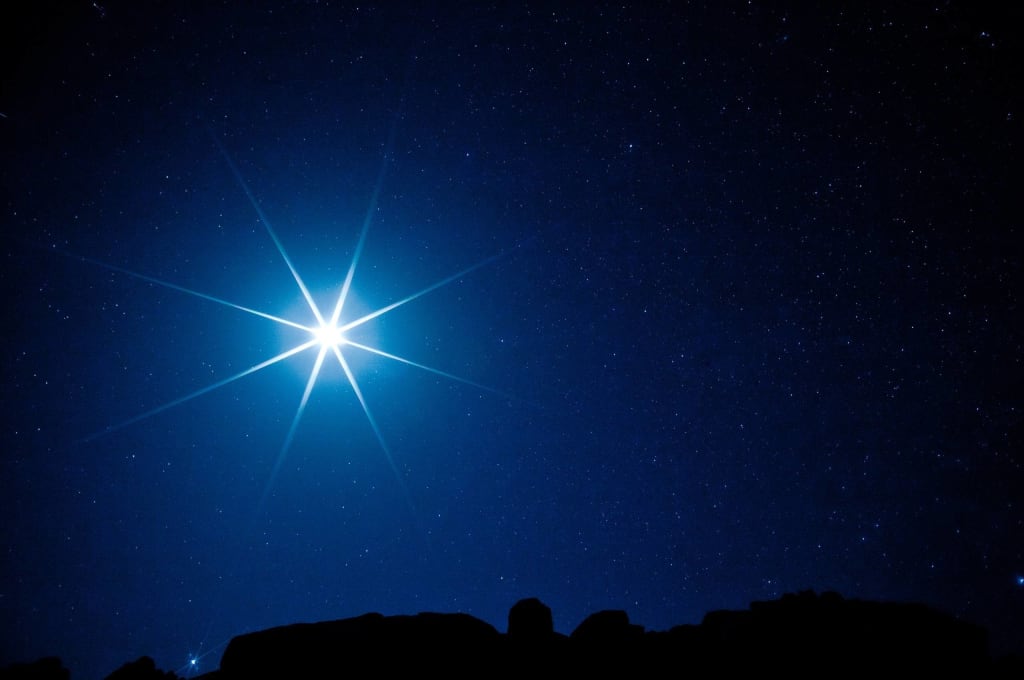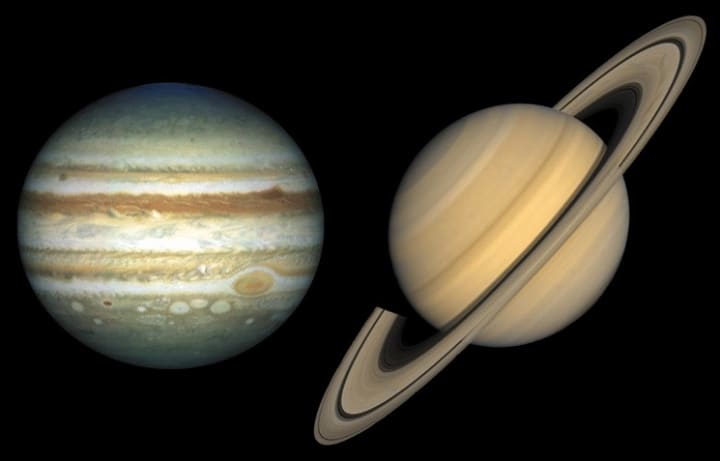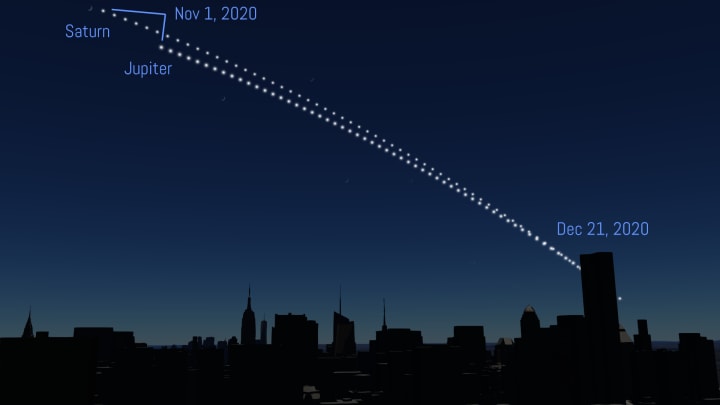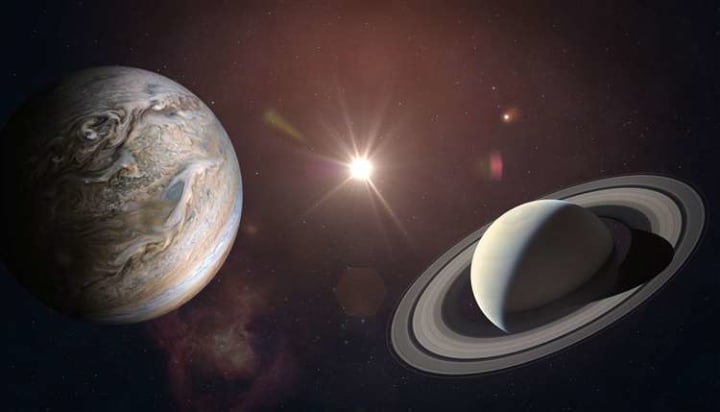
December 21st marks the winter solstice, the shortest day of the year within the northern hemisphere, and the beginning of the astronomical winter. However, the winter solstice of this year will be extraordinary, as a rare planetary conjunction interrupts the darkness.
It was year 1226 during the last occurrence Saturn and Jupiter orbited this close to each other. Nearly 800 years later, on Monday, these giant gas balls will once again reappear near in the sky. Despite their closeness to the human eye, Jupiter and Saturn will be hundreds of millions of miles away from one another, only being one-tenth of a degree apart, which is about the thickness of a dime held at arm’s length, according to NASA.
In 1623, a similar conjunction of the planets occurred, albeit on the same side of the sky as the sun, which meant it was unfortunately not visible from Earth at that time. It was a slightly tighter passage than the Monday night event.

Current astronomers and other sky watchers are excited to witness the once-in-a-lifetime event. Astrologists herald it as a time of rebirth, because the conjunction falls on the winter solstice, and many others refer to this bright conjunction as the Christmas Star because it's so close to the holiday.
The conjunction will be very brief, visible for about two hours after sunset. Observers will need to look west-southwest as it becomes dark to see the bright planets shining in the sky. If they appear to be merged with the naked eye, a telescope or binoculars will help distinguish the separated space.
Saturn will appear to the right of Jupiter. Jupiter will be much brighter, shining with a rusty looking color, while Saturn, which is somewhat dimmer, will have a yellowish hue. The two planets started approaching each other in September.
The planetary dance will end almost as quickly as it begins. Jupiter and Saturn will be further distant from each other starting the next day on December 22. After their extremely close appearance on Monday, the pair will begin to separate and even remain close around Christmas, but Saturn will appear further down and to the right of Jupiter each night as it moves further apart.

In the Middle Ages, very few people on Earth who witnessed such a near-collision of celestial beings would understand what was going on in front of them. It's most likely that people were fascinated viewing it even in that time, says Jo Marchant, a science journalist and author of "The Human Cosmos: Civilization and the Stars.
“Humans have had a really intimate relationship with the cosmos ever since the dawn of our species. We forget now living in polluted cities, but it would have been the most fantastic thing in the night sky.”
In modern times, we now have telescopes, satellite systems, and all kinds of stargazing apps to keep us up-to-date on cosmic events and the visible solar system. Humans have never lost curiosity about the night sky.
“That feeling that we belong in the cosmos, that we belong in the universe and that we can find personal meaning with what is happening in the sky. I think that is something that we still have now.” Added Marchant.

Approximately every 20 years, there is a conjunction between Jupiter and Saturn, but this year is particularly special because they come so close in the sky, remarked Henry Throop, a NASA astronomer who has been observing the upcoming planet reunion from his yard, as they close in by centimeters each day leading to the event.
The next opportunity to view the planetary "merging" during it's next close conjunction is scheduled for March 15, 2080. So continue to wonder in the night sky like our ancestors before us, and enjoy the true beauty of the universe.
About the Creator
Buzzword
BuzzWord features, news, reviews and top ten lists.






Comments
There are no comments for this story
Be the first to respond and start the conversation.